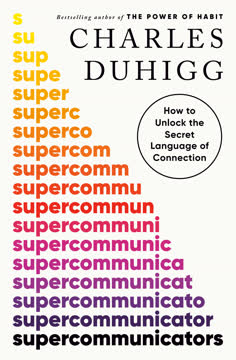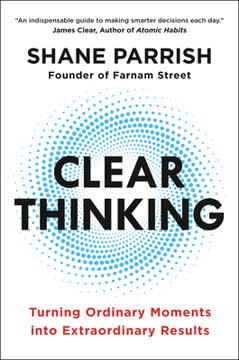つの重要なポイント
1. 戦略と実行は切り離せない;どちらも不確実性の中で選択を行うことを含む
戦略はコストよりも収益に関するものであり、完璧さは不可能な基準である。
戦略は選択に関するものである。 戦略の策定と実行が別々のプロセスであるという従来の見方は誤りである。実際には、どちらも不確実性と競争圧力の中で意思決定を行うことを含む。経営者は以下に焦点を当てるべきである:
- どこで戦うか、どう勝つかを定義する
- 戦略が成功の確率を高めるが、保証するものではないことを認識する
- 選択の背後にある論理を明確にし、テストと改良ができるようにする
詳細な計画を作成するのではなく、リーダーは組織全体の従業員に明確な戦略的枠組みの中で整合性のある選択を行う権限を与えるべきである。これにより、状況が変化する中で迅速な適応が可能となる。
2. 顧客の忠誠心は過大評価されている;累積的な優位性の創出に焦点を当てる
顧客は意識的な選択をしない;習慣に陥る。
習慣的な行動を構築する。 従来のロイヤルティプログラムは、しばしば人々が実際にどのように意思決定を行うかを無視するため失敗する。報酬を通じて忠実な顧客を作ろうとするのではなく、企業は以下に焦点を当てるべきである:
- 最も簡単で馴染みのある選択肢になる
- 習慣を強化する製品や体験を設計する
- ブランド、パッケージング、ユーザーインターフェースの一貫性を維持する
目標は、各インタラクションが将来のインタラクションをより可能にする「累積的な優位性」を創出することである。これは、タイド洗剤のようなカテゴリリーダーが、製品の違いがほとんどないにもかかわらず、長期間にわたって支配的な市場シェアを維持する理由である。
3. 企業機能は価値を追加するための独自の戦略を必要とする
企業機能も顧客にサービスを提供する:そのサービスを利用する事業部門である。
従属的な戦略を避ける。 多くの企業は、HR、IT、財務などの企業機能を単なるコストセンターとして扱い、事業部門をサポートするだけである。これにより、差別化されていない反応的なサービスが提供され、価値を創出できない。代わりに、機能は以下を行うべきである:
- 主要な顧客とコアバリュープロポジションを定義する
- 内部で構築する能力と外部委託する能力を決定する
- 競争優位に対する影響を測定する指標を開発する
明確な戦略を策定することで、機能は高価値の活動に焦点を当て、トップタレントを引き付け、外部委託の脅威を回避することができる。これにより、戦略的パートナーとして機能し、単なる注文受け手ではなくなる。
4. 知識労働を恒久的な仕事ではなくプロジェクトに基づいて組織する
知識労働は実際には主にプロジェクトの形で行われ、日常的なルーチン作業ではない。
フロー・トゥ・ワークを受け入れる。 従来の職務構造は安定した予測可能な仕事を前提としているが、知識労働者は大きな仕事量の変動に直面する。生産性を向上させるためには:
- 恒久的な役割ではなく、時間制限のあるプロジェクトに基づいて組織する
- 柔軟に割り当てられるリソースのプールを作成する
- スキルとプロジェクトのニーズをマッチングするシステムを開発する
このアプローチは、コンサルティング会社やハリウッドスタジオで成功裏に使用されており、ダウンタイムを減少させ、より高価値のイニシアチブに取り組むことを可能にする。また、従業員が複数の分野で新しいスキルを開発する機会を提供する。
5. 文化の変革には個々の働き方の変更が必要である
文化を変えるには、個々の働き方を変える必要がある。
インタラクションに焦点を当てる。 新しい価値観についての大々的な発表は、文化を変えることはほとんどない。実際の変革は、日常の仕事の慣行に対する小さな変更を通じて起こる。リーダーは以下を行うべきである:
- 会議の構造とコミュニケーションの規範を再設計する
- 意思決定の方法とリソースの配分を変更する
- 部門横断的なコラボレーションの機会を作る
これらの「マイクロチェンジ」は、行動を導く暗黙のルールを徐々にシフトさせる。時間が経つにつれて、「ここではこうする」という新しい共有の前提を作り出す。
6. 優れた選択肢を創出するには、データ分析だけでなく想像力が必要である
優れた選択肢を創出するには、データよりも想像力が必要である。
分析と創造性のバランスを取る。 多くの経営者は、戦略的選択を行う際にデータと分析に過度に依存している。厳密な分析は重要であるが、画期的な戦略はしばしば想像力の飛躍から生まれる。新しい選択肢を生み出すためには:
- 言葉にされていない顧客のニーズを明らかにするために定性的な調査を使用する
- 他の業界や分野からの類推を適用する
- 未来の可能性についての魅力的な物語を作成する
目標は、現状の漸進的な改善を超えた選択肢のセットを拡大することである。データは、最も有望なアイデアをテストし、改良するために使用される。
7. 介入の設計はイノベーション自体と同じくらい重要である
介入の設計はイノベーション自体と同じくらい重要である。
採用の計画を立てる。 多くの潜在的に変革的なイノベーションは、どのように導入され統合されるかに十分な注意が払われないため失敗する。成功する介入設計には以下が含まれる:
- 主要な利害関係者とその関心をマッピングする
- 実装アプローチをプロトタイプ化し、反復する
- 支持を構築し、抵抗を克服する物語を作成する
導入をイノベーション自体と同じくらい慎重に扱うことで、企業はアイデアが定着し、持続的な影響を与える可能性を高める。
8. M&Aでは、価値を得るために価値を提供する
価値を得るためには、価値を提供する必要がある。
競争力の向上に焦点を当てる。 ほとんどの買収が失敗するのは、買い手がターゲット企業から得られるものに焦点を当てるためであり、提供できるものに焦点を当てないためである。成功する買収者は:
- ターゲット企業をより競争力のあるものにする具体的な方法を特定する
- 楽観的な予測に基づいて過剰に支払うことを避ける
- シナジーを迅速に実現するために統合に投資する
目標は、どちらの企業単独よりも強力な統合エンティティを作り出すことである。これには、各当事者の強みを明確に理解し、それらを活用して新しい価値の源を創出することが必要である。
最終更新日:
FAQ
What's "A New Way To Think" about?
- Author and Purpose: "A New Way To Think" by Roger L. Martin is a guide to improving management effectiveness by challenging traditional business models and introducing new ways of thinking.
- Core Concept: The book argues that many existing management models are flawed and persist despite their ineffectiveness, and it offers alternative models that promise better outcomes.
- Structure: The book is divided into four parts, each focusing on different aspects of management: context, making choices, structuring work, and key activities.
- Target Audience: It is aimed at executives, managers, and anyone interested in enhancing their strategic thinking and management practices.
Why should I read "A New Way To Think"?
- Challenge Existing Models: The book encourages readers to question and rethink established management models that may not be delivering desired results.
- Practical Frameworks: It provides practical frameworks and alternative models that can be applied to real-world business challenges.
- Expert Insights: Written by a renowned management thinker, the book offers insights from Roger L. Martin's extensive experience advising top companies.
- Broad Applicability: The concepts are applicable across various industries and organizational levels, making it a valuable resource for a wide audience.
What are the key takeaways of "A New Way To Think"?
- Rethink Management Models: Many traditional management models are outdated and need to be replaced with more effective alternatives.
- Focus on Human Value: New ways of thinking should prioritize human value over organizational structures.
- Strategy and Execution: Strategy and execution are not separate; they are intertwined and should be treated as such.
- Customer-Centric Approach: To create shareholder value, businesses should focus on putting customers first.
What are the best quotes from "A New Way To Think" and what do they mean?
- Tom Peters on the Book: "I would pay 10 or 110 times the cover price for just the table of contents of this extraordinary book." This highlights the book's value in providing actionable insights.
- Julia Hartz on Simplification: "Roger Martin has an undeniable gift for simplifying the complex and nuanced scenarios of management." This emphasizes the book's ability to distill complex management issues into understandable concepts.
- Zhang Ruimin on Human Value: "New ways of thinking must shift from centering around the organization to centering around human value." This quote underscores the book's focus on prioritizing human-centric approaches in management.
How does Roger L. Martin suggest we rethink competition in "A New Way To Think"?
- Frontline Focus: Martin argues that competition happens at the front line, not at the head office, emphasizing the importance of customer interactions.
- Value Maximization: The book suggests that every corporate level should help the level below it to serve customers better, maximizing value at the front lines.
- Organizational Structure: It challenges traditional hierarchical structures, advocating for a more customer-centric approach that empowers frontline employees.
- Net Value Addition: Each organizational layer should add more value than it costs, ensuring competitiveness at the front line.
What does "A New Way To Think" say about stakeholder value?
- Customer First: The book argues that to create shareholder value, businesses should prioritize customers over shareholders.
- Long-Term Focus: It suggests that focusing on customer satisfaction leads to long-term shareholder value, as demonstrated by companies like Johnson & Johnson and Procter & Gamble.
- Compensation and Culture: The book discusses how compensation structures and corporate culture should align with a customer-first approach.
- Critique of Shareholder Primacy: It critiques the traditional focus on maximizing shareholder value, highlighting its limitations and potential for short-termism.
How does "A New Way To Think" address customer decision-making?
- Habit Over Loyalty: The book posits that customer decisions are often driven by habit rather than conscious loyalty, emphasizing the power of cumulative advantage.
- Ease of Choice: It suggests that offering customers the easiest choice, rather than the perfect one, can lead to sustained competitive advantage.
- Innovation and Familiarity: While innovation is important, maintaining familiarity and ease of use is crucial for customer retention.
- Behavioral Insights: The book draws on behavioral psychology to explain how processing fluency and repeated experiences influence customer preferences.
What is the "possibilities-based approach" in "A New Way To Think"?
- Strategic Possibilities: The approach involves generating multiple strategic possibilities and assessing what would have to be true for each to succeed.
- Testing and Choice: It emphasizes testing the conditions for success and making informed choices based on feasibility and potential outcomes.
- Collaborative Process: The approach encourages collaboration and input from diverse team members to generate creative and viable strategic options.
- Focus on Conditions: Instead of focusing on what is true, it asks what would have to be true, shifting the focus to potential and opportunity.
How does "A New Way To Think" redefine the role of data in decision-making?
- Imagination Over Data: The book argues that creating great choices requires imagination more than data, challenging the over-reliance on data-driven decisions.
- Possibility vs. Necessity: It distinguishes between situations dominated by possibility (changeable) and necessity (unchangeable), advocating for a design and imagination-driven approach in the former.
- Breaking the Frame: The book encourages breaking conventional frames and exploring new narratives to drive innovation and strategic thinking.
- Prototyping and Testing: It highlights the importance of prototyping and testing new ideas to create data and insights for decision-making.
What does "A New Way To Think" suggest about changing organizational culture?
- Indirect Change: The book emphasizes that culture can only be changed by altering how individuals work with each other, not by direct mandates.
- Interpersonal Mechanisms: It highlights the role of interpersonal interactions in aligning cultural and formal mechanisms within an organization.
- Microinterventions: Small changes in how meetings are structured and conversations are framed can lead to significant cultural shifts.
- Case Study: The book provides examples, such as the cultural transformation at the Rotman School of Management, to illustrate successful culture change.
How does "A New Way To Think" propose organizing knowledge work?
- Project-Based Organization: The book advocates for organizing knowledge work around projects rather than permanent jobs to improve productivity and flexibility.
- Flow-to-Work Model: It suggests a flow-to-work model where knowledge workers are assigned to projects based on demand, reducing downtime and inefficiencies.
- Knowledge Codification: The book emphasizes the importance of codifying knowledge to advance from heuristics to algorithms, enhancing knowledge transfer and productivity.
- Professional Services Model: It draws parallels with professional services firms, which successfully manage knowledge work through project-based structures.
What is the book's perspective on mergers and acquisitions (M&A)?
- Value Exchange: The book argues that successful M&A requires giving value to get value, focusing on what the acquirer can offer the target.
- Four Ways to Enhance Value: It outlines four ways to enhance an acquisition's competitiveness: smarter growth capital, better managerial oversight, skill transfer, and capability sharing.
- Avoiding the Take Mode: The book warns against acquisitions driven by a desire to enter attractive markets without understanding or enhancing the target's value.
- Perverse Incentives: It discusses the perverse incentives that drive M&A activity, such as stock-based compensation and accounting standards, leading to value-destroying deals.
レビュー
本書『A New Way to Think』は、従来のビジネスモデルに挑戦し、戦略、人材管理、組織構造に関する新しい視点を提供する。読者はマーティンの洞察を高く評価するが、一部のアイデアは完全に新しいものではないと指摘する。本書の形式はHBRの記事から編纂されており、賛否両論がある。ある人々はそれをまとまりがないと感じる一方で、他の人々は実践的なフレームワークや刺激的な概念を評価している。特に戦略、M&A、人材管理に関するセクションが高く評価されている。本書は大企業の経営者やコンサルタントにとって最も関連性が高いと見なされているが、企業の洞察を求める起業家にも価値があるとされている。
Similar Books

















